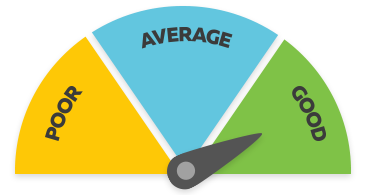Civil Engineering Technician/Draughtsperson
Kaihangarau/Kaihoahoa Mataaro Metarahi
Alternative titles for this job
Civil engineering technicians/draughtspeople plan and draw the technical details for building and repairing roads, bridges, buildings and other structures.
Pay
Civil engineering technicians/draughtspeople with one to four years' experience usually earn
$50K-$70K per year
Civil engineering technicians/draughtspeople with more than four years' experience usually earn
$70K-$110K per year
Source: Engineering NZ and Hays, 2020.
Job opportunities
Pay
Pay for civil engineering technicians/draughtspeople varies depending on skills and experience.
- Civil engineering cadets (who work while completing their training part time) usually earn between minimum wage and $50,000 a year.
- Civil engineering technicians/draughtspeople with one to four years' experience usually earn $50,000 to $70,000.
- Civil engineering technicians/draughtspeople with more than four years' experience usually earn $70,000 to $110,000.
Civil engineering technicians/draughtspeople who work as contractors may also get a vehicle and other benefits.
Source: careers.govt.nz research, 2020; Hays, 'FY 19/20 Hays Salary Guide', 2020; and Engineering New Zealand, 2020.
- Hays website - 2019/2020 salary guide (PDF - 2.11MB)
- PAYE.net.nz website - use this calculator to convert pay and salary information
- Employment New Zealand website - information about minimum wage rates
(This information is a guide only. Find out more about the sources of our pay information)
What you will do
Civil engineering technicians/draughtspeople may do some or all of the following:
- plan and design structures such as roads, buildings and bridges
- make detailed drawings of structures using computer-aided design (CAD) software
- prepare construction plans that include budgets, costs and timetables
- check on the progress of civil engineering projects and supervise maintenance and repair work
- discuss and report design, planning or construction problems with engineers
- direct, perform and analyse field and laboratory testing of sites and materials
- consult with private clients, government agencies, contractors and other professionals.
Skills and knowledge
Civil engineering technicians/draughtspeople need to have:
- knowledge of civil engineering practices and draughting ability
- knowledge of building methods and materials
- skill in analysing and interpreting information such as client requirements, plans and designs
- computer skills, including the ability to use computer-aided design (CAD) software
- knowledge of relevant legislation and processes such as the Resource Management Act, the New Zealand Building Code, local by-laws and town planning regulations.
Working conditions
Civil engineering technicians/draughtspeople:
- usually work regular business hours, but may also work evenings and weekends
- work in offices and at building sites
- may travel to work on engineering projects around New Zealand or overseas.
What's the job really like?

Greg Noyer
Civil Engineering Draughtsperson
Love of maths sparked a career in civil engineering
Greg Noyer’s pathway to becoming a civil engineering draughtsperson began with an interest in technical drawing and maths at secondary school.
"Originally, I trained as a draughtsperson. I detailed structural steelwork and prepared workshop drawings of construction parts and materials. I moved on to mechanical draughting, and structural engineering draughting for consulting engineers.
"I got my current position as a civil engineering draughtsperson when a friend I used to work with asked if I would like to join their team."
Having a qualification is a plus
Though a qualification isn't required to work as a civil engineering draughtsperson, Greg recommends getting one.
"I studied at Auckland Technical Institute and got a New Zealand Certificate in Mechanical Engineering.
"I suggest a qualification in civil engineering would be great for anyone interested in working in that sector."
The more you learn, the more opportunities you’ll get
Greg says working as a civil engineering draughtsperson is both challenging and rewarding.
"As you learn, you are usually given more responsibility, and rewarded for that independence. Some people I know started as draughtspeople and went on to study to become design engineers.
"My current position is very challenging, which I enjoy. I like learning and having a variety of work, so it's a great role."
Entry requirements
Civil engineering technician
To become a civil engineering technician you need to complete a New Zealand Diploma in Engineering (NZDE) – Civil Engineering. This qualification takes two years of full-time study to complete.
Alternatively, some companies offer cadetships, so you can study part time towards the diploma while working.
Once on the job, civil engineering technicians can work towards completing the New Zealand Diploma in Engineering Practice (NZDEP). This leads to certification as an engineering technician and chartered membership of Engineering New Zealand
Civil engineering draughtsperson
Employers prefer to hire civil engineering draughtspeople with experience in specific CAD (computer-aided design) software. Alternatively, you may be able to complete a diploma in CAD.
A New Zealand Diploma in Engineering is not necessary to become a draughtsperson, but it is useful.
Secondary education
To gain entry to the New Zealand Diploma in Engineering (NZDE) course, it is recommended that you have a minimum of 48 NCEA credits at Level 2 in four subjects, including at least 12 credits in maths. Physics is also highly recommended, and technology subjects may be useful.
Personal requirements
Civil engineering technicians/draughtspeople need to be:
- good at problem solving
- organised and responsible
- practical, methodical and accurate
- able to make good judgements
- able to work well under pressure.
Civil engineering draughtspeople are responsible for the details and presentation of drawings and documents, so attention to detail is a must.

Greg Noyer
Civil Engineering Draughtsperson
Useful experience
Useful experience for civil engineering technicians/draughtspeople includes:
- work in engineering or construction
- work with tools and machinery
- draughting experience.
A good way to gain industry experience is to do a cadetship or get part-time work with an engineering firm.
Physical requirements
Civil engineering technicians/draughtspeople need to be reasonably fit as they may have to walk long distances to work sites, and carry equipment.
Registration
Civil engineering technicians can become chartered members of Engineering New Zealand and register as certified engineering technicians.
Find out more about training
- Connexis
- (07) 834 3038 - www.connexis.org.nz
- Engineering New Zealand
- (04) 473 9444 - hello@engineeringnz.org - www.engineeringnz.org
- NZ Institute of Highway Technology (NZIHT)
- (06) 759 7065 - admin@nziht.co.nz - www.nziht.co.nz
What are the chances of getting a job?
Shortage of civil engineering technicians/draughtspeople
Opportunities for civil engineering technicians/draughtspeople are good due to a shortage of workers, and high demand for their services.
The roles of civil engineering technician and civil engineering draughtsperson both appear on Immigration New Zealand's construction and infrastructure skill shortage list. Civil engineering technician also appears on Immigration New Zealand's long-term skill shortage list. This means the Government is actively encouraging skilled civil engineering technicians/draughtspeople from overseas to work in New Zealand.
According to the Census, 969 civil engineering technicians and 264 civil engineering draughtspeople worked in New Zealand in 2018.
Range of factors contribute to demand for civil engineering technicians/draughtspeople
Demand for civil engineering technicians/draughtspeople is expected to remain strong due to increased government investment in infrastructure projects such as:
- road, rail and bridge maintenance and development
- river engineering
- wastewater management.
Types of employers varied
Most civil engineering technicians/draughtspeople work for:
- private engineering consultancies
- construction firms
- government agencies such as NZ Transport Agency
- infrastructure and utility companies such as railway and electricity companies.
Sources
- Engineering New Zealand, 'Remuneration Survey: 2019 Snapshot', accessed January 2020, (www.engineeringnz.org.nz).
- Hays, 'FY 19/20 Hays Salary Guide', accessed January 2020, (www.hays.net.nz).
- Immigration New Zealand, 'Construction and Infrastructure Skill Shortage List', 27 May 2019, (www.immigration.govt.nz).
- Immigration New Zealand, 'Long-term Skill Shortage List', 27 May 2019, (www.immigration.govt.nz).
- Infrastructure New Zealand, 'Infrastructure Spending Welcome but Relies on a Step Change in Execution' (media release), 11 December 2019, (www.infrastructure.org.nz).
- Ministry of Business, Innovation and Employment, 'National Construction Pipeline Report', August 2019, (www.mbie.govt.nz).
- New Zealand Government, '$12 Billion in Extra Infrastructure Investment' (media release), 11 December 2019, (www.beehive.govt.nz).
- Stats NZ, '2018 Census Data', 2019.
(This information is a guide only. Find out more about the sources of our job opportunities information)
Progression and specialisations
Civil engineering technicians/draughtspeople can progress within an engineering firm to partner level.
Some become civil engineers by completing a Bachelor of Engineering Technology or a Bachelor of Engineering. Courses completed for the New Zealand Diploma in Engineering can often be cross-credited towards a degree.
Civil engineering technicians may progress to become building and construction managers.
They may also specialise in areas such as water supply, roading and structural engineering.
Last updated 21 November 2024


